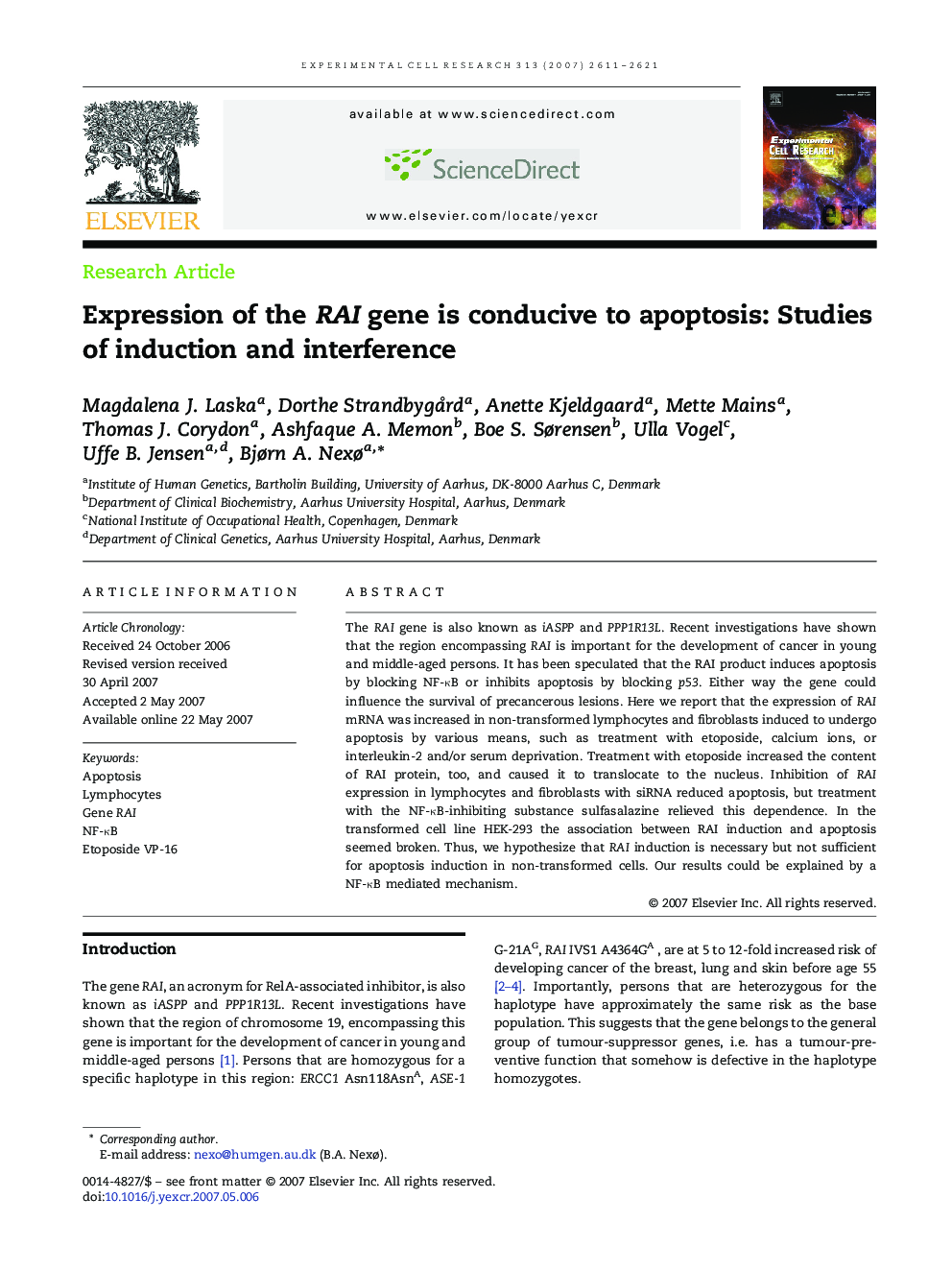| Article ID | Journal | Published Year | Pages | File Type |
|---|---|---|---|---|
| 2132618 | Experimental Cell Research | 2007 | 11 Pages |
The RAI gene is also known as iASPP and PPP1R13L. Recent investigations have shown that the region encompassing RAI is important for the development of cancer in young and middle-aged persons. It has been speculated that the RAI product induces apoptosis by blocking NF-κB or inhibits apoptosis by blocking p53. Either way the gene could influence the survival of precancerous lesions. Here we report that the expression of RAI mRNA was increased in non-transformed lymphocytes and fibroblasts induced to undergo apoptosis by various means, such as treatment with etoposide, calcium ions, or interleukin-2 and/or serum deprivation. Treatment with etoposide increased the content of RAI protein, too, and caused it to translocate to the nucleus. Inhibition of RAI expression in lymphocytes and fibroblasts with siRNA reduced apoptosis, but treatment with the NF-κB-inhibiting substance sulfasalazine relieved this dependence. In the transformed cell line HEK-293 the association between RAI induction and apoptosis seemed broken. Thus, we hypothesize that RAI induction is necessary but not sufficient for apoptosis induction in non-transformed cells. Our results could be explained by a NF-κB mediated mechanism.
